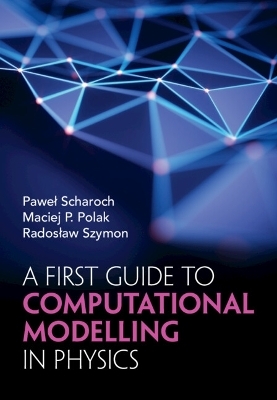
A First Guide to Computational Modelling in Physics
Cambridge University Press (Verlag)
978-1-009-41312-1 (ISBN)
This innovative text helps demystify numerical modelling for early-stage physics and engineering students. It takes a hands-on, project-based approach, with each chapter focusing on an intriguing physics problem taken from classical mechanics, electrodynamics, thermodynamics, astrophysics, and quantum mechanics. To solve these problems, students must apply different numerical methods for themselves, building up their knowledge and practical skills organically. Each project includes a discussion of the fundamentals, the mathematical formulation of the problem, an introduction to the numerical methods and algorithms, and exercises, with solutions available to instructors. The methods presented focus primarily on differential equations, both ordinary and partial, as well as basic mathematical operations. Developed over many years of teaching a computational modelling course, this stand-alone book equips students with an essential numerical modelling toolkit for today's data-driven landscape, and gives them new ways to explore science and engineering.
Paweł Scharoch is a University Professor within the Department of Semiconductor Materials Engineering at Wroclaw University of Science and Technology, Poland. He has also held positions at Durham University, the Fritz Haber Institute, Berlin, and at Orange Labs Poland. His principal work is on structural and electronic properties of atomic systems. Professor Scharoch also has around thirty years of experience in teaching various courses in general physics and computational physics. Maciej Polak holds a Physics Ph.D. from Wrocław University of Science and Technology and is currently a dedicated researcher at University of Wisconsin-Madison's Department of Materials Science and Engineering. He works on first-principles modeling of the electronic band structure of highly mismatched semiconductors alloys for their use in opto-electronics and metals for space applications devices. With over thirty published peer-reviewed articles, he consistently strives to push the boundaries in scientific exploration. Radosław Szymon, MSc, graduated with honours from Wrocław University of Science and Technology in 2022. He is currently pursuing a Ph.D. in semiconductor technology at the same institution, supported by the prestigious Pearl of Science grant. He also enjoys conducting physics simulations, in particular in electromagnetism and quantum mechanics.
Preface; How to use this book; First steps; 1. Rectangular finite quantum well – Stationary Schrödinger Equation in 1D; 2. Diffraction of light on a slit; 3. Pendulum as a standard unit of time; 4. Planetary system; 5. Gravitation inside a star; 6. Normal modes in a cylindrical waveguide; 7. Thermal insulation properties of a wall; 8. Cylindrical capacitor; 9. Coupled harmonic oscillators; 10. The Fermi-Pasta-Ulam problem; 11. Cold hydrogen star; 12. Rectangular quantum well filled with electrons – The idea of self-consistent calculations; 13. Time dependent Schrödinger Equation Dawid Dworzański; 14. Poisson equation in 2D; Appendices; Further Reading; Index.
| Erscheinungsdatum | 30.01.2024 |
|---|---|
| Software | Katarzyna Holodnik-Malecka |
| Zusatzinfo | Worked examples or Exercises |
| Verlagsort | Cambridge |
| Sprache | englisch |
| Gewicht | 394 g |
| Themenwelt | Mathematik / Informatik ► Informatik |
| Mathematik / Informatik ► Mathematik ► Angewandte Mathematik | |
| Naturwissenschaften ► Physik / Astronomie ► Mechanik | |
| ISBN-10 | 1-009-41312-0 / 1009413120 |
| ISBN-13 | 978-1-009-41312-1 / 9781009413121 |
| Zustand | Neuware |
| Haben Sie eine Frage zum Produkt? |
aus dem Bereich


